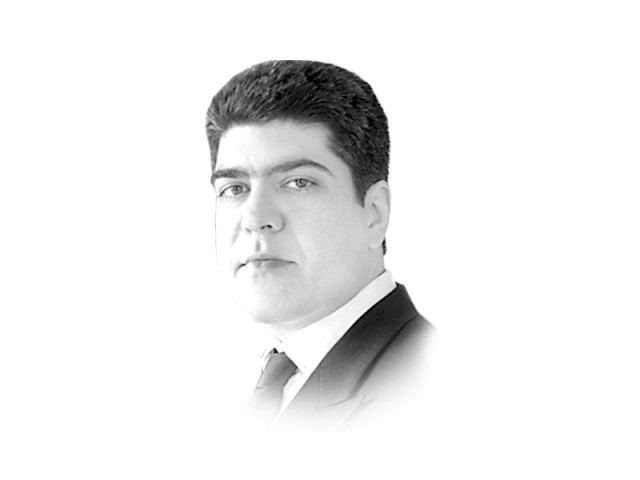On parking
The Pakistani automobile elite seem to think that free and abundant parking is, somehow, a birthright.

Car parking may appear to be of trivial significance, paling in importance to things such as sewage treatment and infrastructure development, but a scratch beneath the surface reveals an interaction with urban planning and development that is too important to ignore.
Hitherto, the practice of parking regulation is carried out by auctioning various recognised parking areas throughout the city. In this manner, the city district government earns revenue and control over parking — which is no more than having a tag stuffed under your windscreen wiper and paying Rs10 if you are lucky enough to find a vacant spot.
The CDGL says that there are 367 parking lots in the city and that about 160 of those “are no longer operational” — which means that the CDGL isn’t earning rent from them. Of course, there are plenty more parking lots in the city where “unapproved parking stands” operate. The CDGL claims that there are over one billion rupees to be earned annually through auctioning parking lots and that it is currently earning only a fraction of this potential.
The strategy of the Lahore Parking Company appears to be to take control of the management and rent collecting from all parking lots in the city. It also plans to construct new parking plazas and automate parking by introducing ‘modern technology’. It is receiving Rs200 million from the Government of Punjab as seed money to begin its task. Parking policy in Lahore isn’t about parking. It’s about rent-seeking, with the CDGL as the rent-seeker. It isn’t about improving congestion in the city or improving urban transport facilities. For that, this issue has to be looked at from a completely different angle.
New thinking on parking would begin by identifying the various stakeholders: citizens, who require parking close to their homes or work; businesses that prefer parking close to their doorstep to facilitate customers and employees; developers requiring parking that keeps their projects profitable; and cities, which should require well-managed parking for its citizens while providing for development, congestion management, quality of life and air quality.
These competing interests are all affected by the high costs of parking. In New Delhi, for example, it is estimated that cars take up about 10 per cent of the available land in the city. With low parking fees, it is easy to spot the massive subsidy being provided to the elite that has access to automobiles. A bottle of mineral water is Rs15 but you can park your car in the city all-day for just Rs10. Elsewhere, keeping in mind construction costs, providing parking plazas means incurring heavy expenditures. In Lahore, the Liberty Parking plaza costs upwards of Rs2.5 million per car and this does not include the value of the land the plaza was built on.
Meanwhile, the Pakistani automobile elite seem to think that free and abundant parking is, somehow, a birthright. It is this realm that parking policy must address: where parking is considered a ‘need’ that ought to be catered to rather than a service the city provides at a cost. I need my cup of coffee every morning but don’t think it’s right to argue that the CDGL provide it to me, freely and abundantly, every morning.
Automobile congestion is choking access through the city, which in turn affects the ability of the city to be the dynamic entity that it should be. The chief means of reducing the number of automobiles in a city is public transport; the other is congestion charging. New parking policies must be integrated into the public transport policies of the city. It remains to be seen whether the Lahore Parking Company takes the initiative and begins planning for the chief minister’s beleaguered Bus Rapid Transit project or whether this newcomer on Lahore’s urban planning scene follows the path of so many other good intentions.
Published in The Express Tribune, September 6th, 2012.
















COMMENTS
Comments are moderated and generally will be posted if they are on-topic and not abusive.
For more information, please see our Comments FAQ